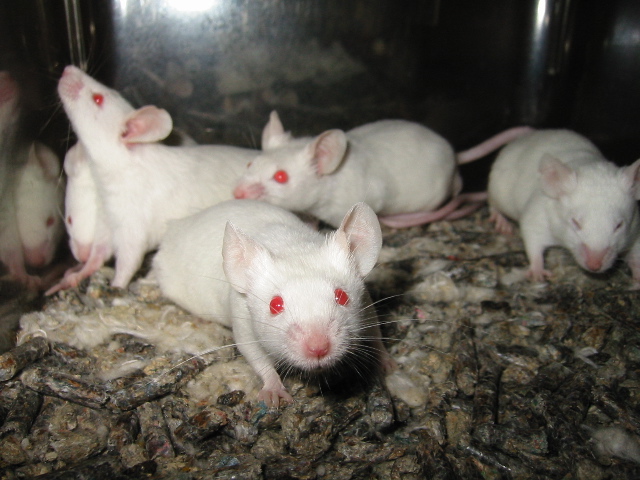The development of whole model systems to study N. gonorrhoeae infect
 ion is important, as several different cell types are involved in host response. Currently, infection in males is examined through urethral inoculation of male volunteers, and results indicate a strong innate immune response characterized by induction of proinflammatory cytokines (3). Due to the risk of serious complications and the frequency of asymptomatic infection in women, such volunteer infection models cannot be utilized for female infection, and studies are currently limited to tissue culture cells and a developing 17β estradiol-treated BALB/c mouse model (3).
ion is important, as several different cell types are involved in host response. Currently, infection in males is examined through urethral inoculation of male volunteers, and results indicate a strong innate immune response characterized by induction of proinflammatory cytokines (3). Due to the risk of serious complications and the frequency of asymptomatic infection in women, such volunteer infection models cannot be utilized for female infection, and studies are currently limited to tissue culture cells and a developing 17β estradiol-treated BALB/c mouse model (3).To better characterize the innate immune response to gonococcal infection in BALB/c mice, and to determine if response to infection varies among different inbred mouse strains, Packiam et al analyzed the ability of BALB/c, C57BL/6, and C3H/HeN mice to support vaginal colonization by N. gonorrhoeae and mount an inflammatory response. Their results show the establishment of a productive infection in BALB/c mice characterized by a large influx of PMNs and the induction of proinflammatory cytokines, including TNFα, IL-6, and MIP-2, a homolog of human IL-83.
C57BL/6 mice, however, while able to support colonization by N. gonorrhoeae to the same levels as BALB/c mice, did not mount an inflammatory response, and thus might provide a model for asymptomatic infection (3). Finally, C3H/HeN mice were inherently resistant to N. gonorrhoeae by a mechanism other than an overwhelming innate response, as shown by their inability to support colonization and a lack of PMN influx upon infection (3). Taken together, these results suggest an import role for host genetic background in determining susceptibility to N. gonorrhoeae.
This phenomenon is not restricted to N. gonorrhoeae. In fact, variation in vulnerability to specifi
 c pathogens among different inbred mouse strains has been observed for numerous bacteria, including Mycobacterium tuberculosis, Salmonella typhimurium, and Legionella pneumophila (2).
c pathogens among different inbred mouse strains has been observed for numerous bacteria, including Mycobacterium tuberculosis, Salmonella typhimurium, and Legionella pneumophila (2).These results, therefore, raise several important questions. What genetic factors mediate susceptibility to specific pathogens in otherwise healthy individuals? What bacterial systems and components are involved in determining host genetic background-specific susceptibility? How can we exploit these host-pathogen relationships in the development of more efficient therapies and vaccines?
Bacterial disease is often studied from two distinct angles: microbial mechanisms of pathogenesis and virulence, and host defenses against microbial invaders. Currently, however, more emphasis is being placed on examining the host-pathogen interface, and studies such as this elucidate the demand for the breakdown of the barrier between microbiology and immunology. We cannot fully understand microbial disease mechanisms without taking into consideration host, pathogen, and the complex interactions that mediate their relationship.
Sources:
1. CDC. Increase in fluoroquinolone-resistant Neisseria gonorrhoeae among men who have sex with men—United States, 2003, and revised recommendations for gonorrhea treatment, 2004. MMWR Morb Mortal Wkly Rep 2004; 53: 335 – 338.
2. Kramnik I and Boyartchuk V. Immunity to intracellular pathogens as a complex genetic train. Curr. Opion. Microbiol. 2002; 5:111 – 117.
3. Packiam M, Veit SJ, Anderson DJ, Ingalls RR, & Jerse AE (2010). Mouse strain-dependent differences in susceptibility to Neisseria gonorrhoeae infection and induction of innate immune responses. Infection and immunity, 78 (1), 433-40 PMID: 19901062
Other Articles of Interest:
Out With the Bad: Efflux in Klebsiella
Nitric Oxide Synthase Isn't Just Used By Our White Blood Cells
A Home for the Bugs in Our Appendix



No comments:
Post a Comment